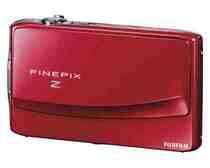Fujifilm Finepix Z900EXR review
The Z900EXR has been available for a couple of months and almost escaped our attention, but now that it's available for just £130, it warrants a closer look.
We were bowled over by Fujifilm's EXR technology when we first encountered it in the F200EXR . It turned the issue of megapixel one-upmanship on its head by being either a 12-megapixel camera (for those who are impressed by big numbers) or a 6-megapixel camera (for those who don't like excessively noisy photos), depending on the selected mode. This was achieved at sensor level, and not simply by downsizing the 12-megapixel shots. It also helped that the sensor measured 1/1.6in across, giving a much larger surface area than the 1/2.3in sensors used in most compacts – this too helped keep noise levels down and picture quality up.

Since then, Fujifilm has watered down the benefits of EXR, first by shrinking the sensors to 1/2in and then by raising the megapixel count. The sensor in the Z900EXR has 16 or 8 megapixels, depending on its mode. That's a disappointing development, but taken on its own terms, an 8-megapixel sensor in a low-cost camera is exactly what we've been pining for.
Its other specifications belie the low price, with 1080p video recording, an HDMI output, a 5x zoom lens, a classy, ultra-compact aluminium shell and a 3.5in touchscreen. We have mixed feelings about touchscreen cameras, and the Z900EXR encapsulates them perfectly. It's put to good use in the track focus mode – after touching the screen, the camera tracked our chosen subject extremely responsively. The on-screen buttons are sensibly laid out in grid formation rather than as scrolling menus, and they rotate automatically when holding the camera in portrait orientation. However, the menus didn't always keep up with us – the camera sometimes beeped to confirm that we'd pressed it but failed to act on our request.

We started by testing the Z900EXR in 16-megapixel mode, but this didn't last long. The lens struggled to resolve that level of detail and photos were predictably noisy. However, switching to 8 megapixels showed a distinct improvement, with significantly lower noise – and as a result, greater detail retention – in low light. The 8-megapixel mode also unlocked another benefit of EXR technology, under-exposing the brightest parts of images to avoid clipped highlights. It raised performance, too, improving shot-to-shot times from 2.4 seconds to two seconds, and doubling the longevity of the 3fps burst mode to six shots.

Lowering the resolution to 8 megapixels and selecting EXR Dynamic-Range Priority mode (right) allows the camera to under-expose the brightest parts of photos, avoiding washed out highlights
However, EXR technology seemed to bring fewer benefits when shooting in bright conditions. There was still some noise, giving a slightly scruffy, vague appearance to fine details. Neither the sensor nor the lens could match the superb Canon Ixus 115 HS . The Canon also nudged ahead in low light, as its f/2.8 lens gathers more light than the Fujifilm's f/3.9 maximum aperture. Both cameras shoot 1080p video, but the Fujifilm has the advantage here with its ability to zoom and autofocus while recording.